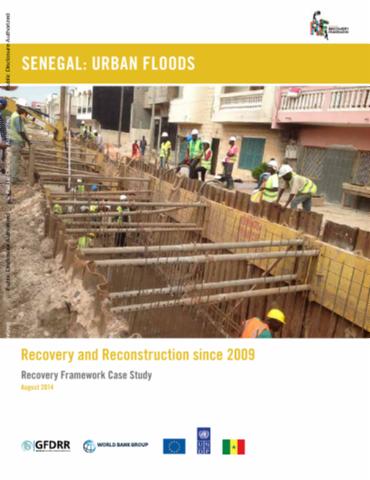The World Bank is a vital source of financial and technical assistance to developing countries around the world. We are not a bank in the ordinary sense but a unique partnership to reduce poverty and support development. The World Bank Group has two ambitious goals: End extreme poverty within a generation and boost shared prosperity.
- To end extreme poverty, the Bank's goal is to decrease the percentage of people living on less than $1.25 a day to no more than 3% by 2030.
- To promote shared prosperity, the goal is to promote income growth of the bottom 40% of the population in each country.
The World Bank Group comprises five institutions managed by their member countries.
The World Bank Group and Land: Working to protect the rights of existing land users and to help secure benefits for smallholder farmers
The World Bank (IBRD and IDA) interacts primarily with governments to increase agricultural productivity, strengthen land tenure policies and improve land governance. More than 90% of the World Bank’s agriculture portfolio focuses on the productivity and access to markets by small holder farmers. Ten percent of our projects focus on the governance of land tenure.
Similarly, investments by the International Finance Corporation (IFC), the World Bank Group’s private sector arm, including those in larger scale enterprises, overwhelmingly support smallholder farmers through improved access to finance, inputs and markets, and as direct suppliers. IFC invests in environmentally and socially sustainable private enterprises in all parts of the value chain (inputs such as irrigation and fertilizers, primary production, processing, transport and storage, traders, and risk management facilities including weather/crop insurance, warehouse financing, etc
For more information, visit the World Bank Group and land and food security (https://www.worldbank.org/en/topic/agriculture/brief/land-and-food-security1
Resources
Displaying 1356 - 1360 of 4906Senegal Urban Floods
Senegal is located in the Sahel region of West Africa. Between 1970 and 2000, the country suffered prolonged droughts that contributed to rural exodus. Communities in these peri-urban areas, already among the poorest in the country, are the most vulnerable to episodes of heavy rainfall and subsequent flooding. The impact of floods in this situation of uncontrolled urban growth is exacerbated by the lack of a functional storm water drainage system, ineffective land-use policies and non-compliance with the urban planning and development master plan.
Reforming Land and Real Estate Markets
Land and real estate reforms have not
been effective at achieving their objectives, in part
because of how they have been designed and implemented. To
be successful, reforms must become comprehensive in design,
argue the authors, although implementation may be phased
over time and take local conditions into account. Reform
must include three elements: 1) Institutional reforms that
better define property rights, reduce information asymmetry,
Gender and Agriculture : Inefficiencies, Segregation, and Low Productivity Traps
Women make essential contributions to agriculture in developing countries, where they constitute approximately 43 percent of the agricultural labor force. However, female farmers typically have lower output per unit of land and are much less likely to be active in commercial farming than their male counterparts. These gender differences in land productivity and participation between male and female farmers are due to gender differences in access to inputs, resources, and services. In this paper, we review the evidence on productivity differences and access to resources.
Gender and Agriculture : Inefficiencies, Segregation, and Low Productivity Traps
Women make essential contributions to agriculture in developing countries, where they constitute approximately 43 percent of the agricultural labor force. However, female farmers typically have lower output per unit of land and are much less likely to be active in commercial farming than their male counterparts. These gender differences in land productivity and participation between male and female farmers are due to gender differences in access to inputs, resources, and services. In this paper, we review the evidence on productivity differences and access to resources.
Geographic Patterns of Land Use and Land Intensity in the Brazilian Amazon
Using census data from the Censo
Agropecuario 1995-96, the authors map indicators of current
land use, and agricultural productivity across Brazil's
Legal Amazon, These data permit geographical resolution
about ten times finer than afforded by "municipio"
data, used in previous studies. The authors focus on the
extent, and productivity of pasture, the dominant land use
in Amazonia today. Simple tabulations suggest that most







